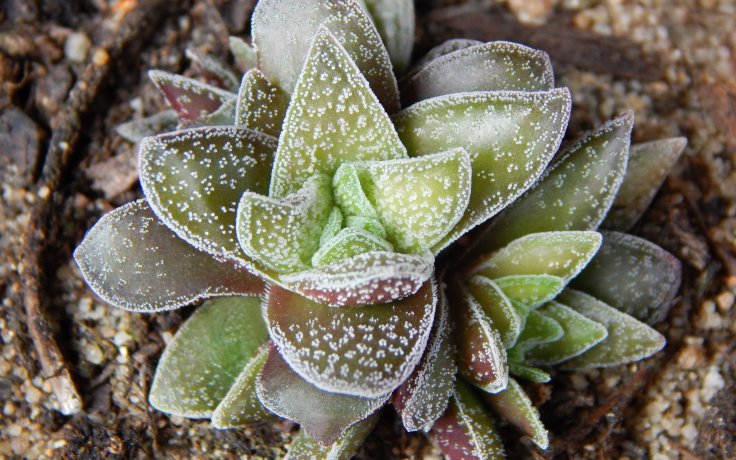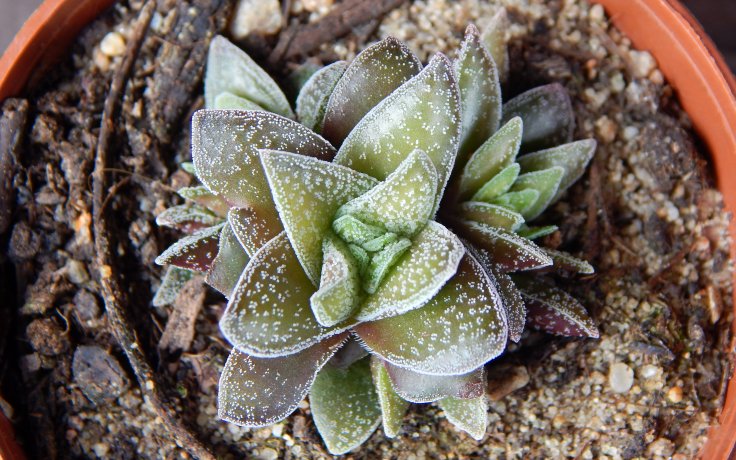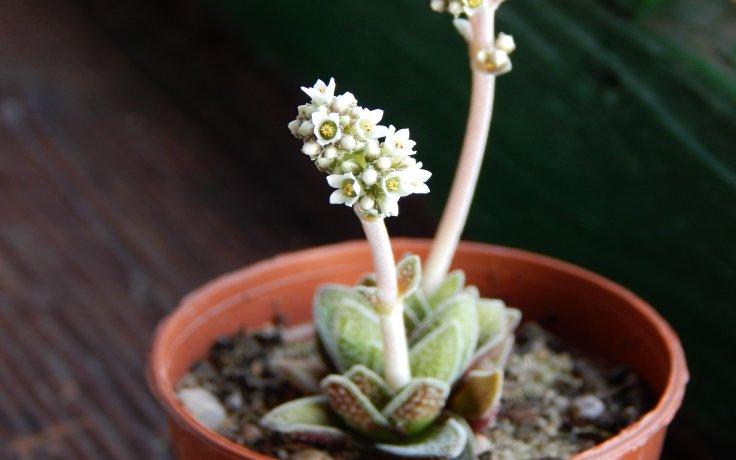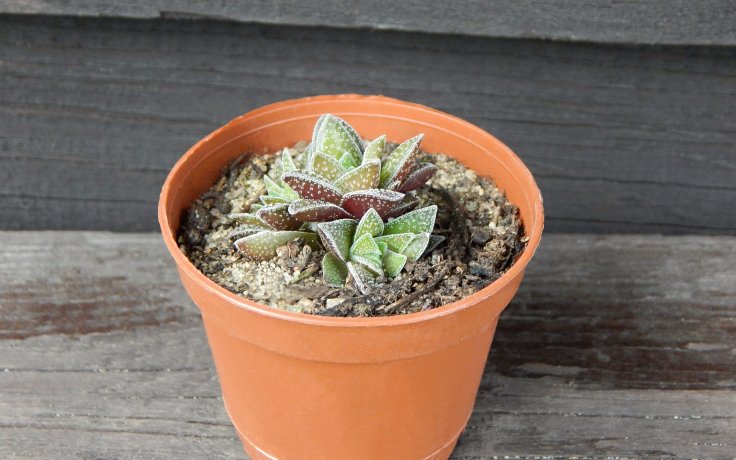- Home
- Succulents
- Crassula
- Crassula Frosty




Crassula Frosty
Place ideally in a sunny position or in partial shade.
Always water a few days after the substrate has dried out. In winter, limit watering.
It can tolerate -3.9 °C in the short term. However, the plant is not hardy.
The fine white papillae on the surface of the leaves give the plant the name Frosty. It gives the impression that the succulent is covered in frost. The papillae thicken at the edges of the leaves and form a whitish border around the edges.
Crassula Frosty is a succulent hybrid created by crossing Crassula deceptor and Crassula tecta. It was introduced by Rudolf Schulz in Australia in 1993. The name 'Frosty' refers to the appearance of the leaves, which are covered with white papillae, making them resemble a frosty.
It most often has dark green leaves, which deepen in colour with more sunlight, and can turn brown to brownish purple. The surface of the leaves is covered with white papillae. The papillae merge into a white border around the periphery of the leaves. The leaves are thick, fleshy, triangular in shape and grow up to 1,5 cm long. They are flat on the upper side and convex on the lower side. It is abundantly branched, forming dense clumps. It is a compact miniature succulent that grows to a maximum height of 15 cm.
It flowers from late summer until Christmas and bears small white flowers.
Prolonged waterlogging can cause rotting of the stem necks. Fertilisation is not suitable for the succulent. The miniature appearance and compact growth give the succulent an interesting appearance. The stiff foliage suggests a certain hardiness, making Crassula Frosty the ideal succulent for those looking for a small plant with a frosty touch.